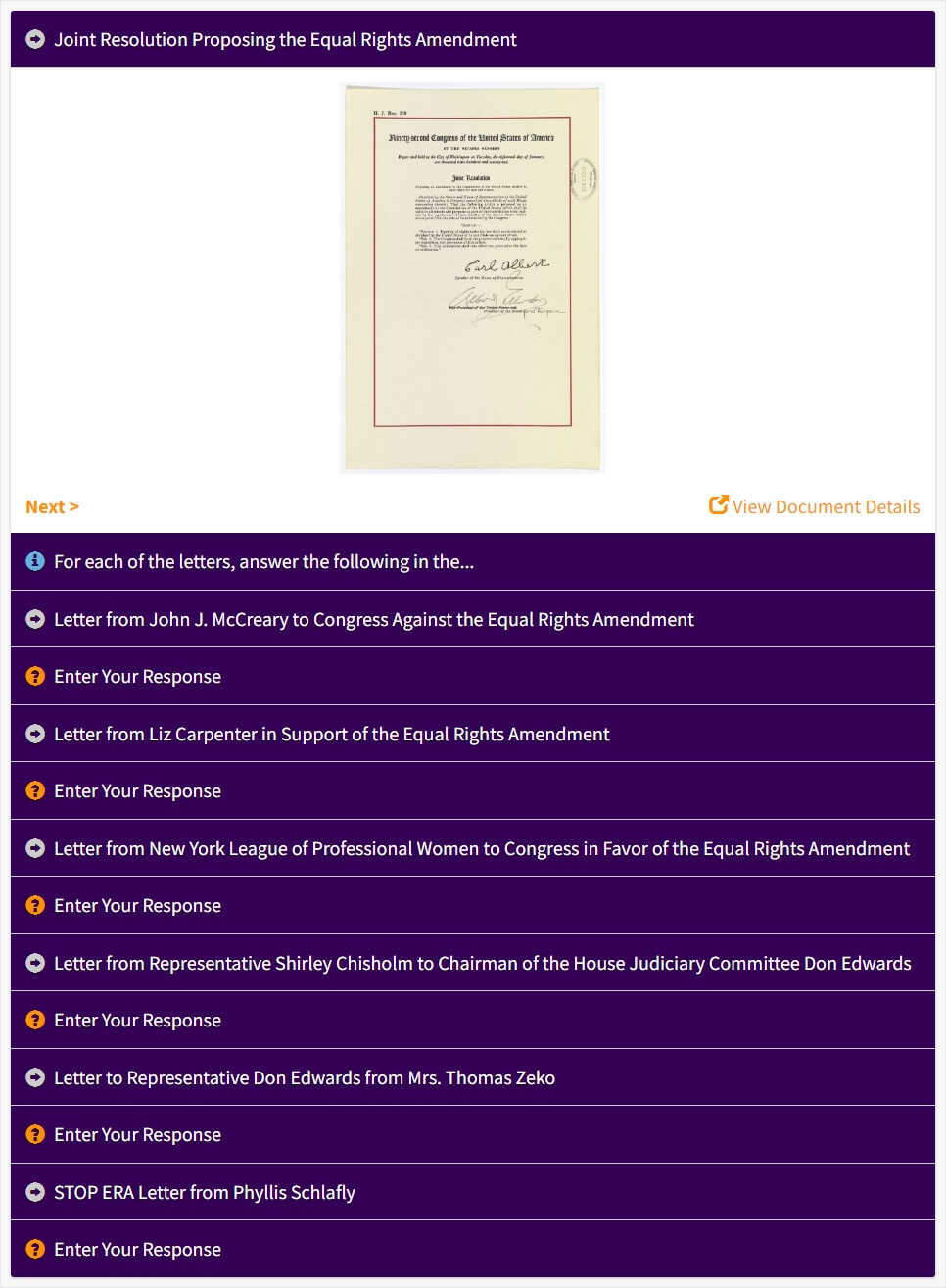Students will compare and contrast letters sent to Congress and the White House related to the Equal Rights Amendment (ERA) which was approved by Congress, but not ratified by the required 3/4 of the states. They will determine the purpose, messages and specific claims in these letters and analyze how their use of language conveys the intended message.
Suggested Teaching Instructions
Use this activity when studying the Equal Rights Amendment (ERA) and the movements in favor and opposed to its passage during the 1970s. For grades 7-12. Expected time is 45-60 minutes.
Present the activity to the entire class. Explain to students that they will be looking at several examples of letters sent to Congress and the White House related to the Equal Rights Amendment--some written in support of its passage, and others in opposition to its ratification. Choose one of the letters and
model document analysis. Ask students to describe the letter and try to determine the overall message.
Then divide students into small groups and ask each group to focus their attention on one of the remaining letters. As they analyze, tell students to focus particular attention on the arguments made in favor of and against the Equal Rights Amendment. Direct students to answer the questions that follow.
- Who wrote it? Who received it?
- What arguments does it make in favor of or against the Equal Rights Amendment?
Share the following historical context, if necessary:
The Equal Rights Amendment (ERA) was first introduced in Congress in 1923 by Susan B. Anthony’s nephew, Congressman Daniel R. Anthony. Drafted by Alice Paul, a leader in the fight for women’s rights, it was proposed as a way to end discrimination against women.
This Constitutional amendment was reintroduced at every subsequent session of Congress for 49 years. Supporters believed it would provide full equality for women; opponents considered it unnecessary, and some believed it destructive of the family.
In 1972 the amendment passed both houses of Congress and was submitted to the State legislatures on March 22, 1972 for ratification.
When the deadline for ratification by the state legislatures passed in 1982, It was three states short of the required 38 (three-fourths of the States). It remains unratified.
Ask groups to share details about their letter with the entire class. After discussing similarities and differences between the arguments, direct students to the "When You're Done" and ask the students the following:
- Which argument in favor of the Equal Rights Amendment did you find the most persuasive?
- Which argument against the Equal Rights Amendment did you find the most persuasive?
- What arguments do you think people would make today in favor of or against the Equal Rights Amendment?





